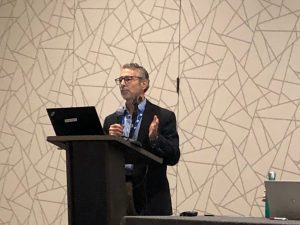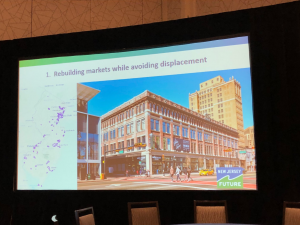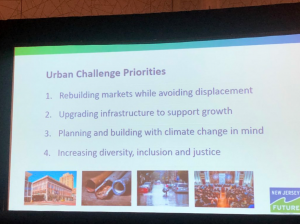New Jersey Future Blog
Addressing urban challenges at the APA Policy and Advocacy Conference
November 11th, 2019 by Peter Kasabach

Each year the American Planning Association (APA) holds its national Policy and Advocacy Conference to “provide attendees with the opportunity to connect with planners and officials on important planning policy issues, advocate for stronger communities by speaking out on legislative issues that affect planning, and learn how to address planning policy issues at the federal, state, and local levels.”
At this year’s conference, held in Washington DC on September 25, I spoke on a panel with Jessie Grogan from the Lincoln Institute of Land Policy (Lincoln) and Ben Forman from the Massachusetts Institute for a New Commonwealth (MassINC). Our task was to discuss the role of state policy in helping to advance “Legacy Cities.” Lincoln characterizes legacy cities as “older industrial centers with populations of less than 200,000, located primarily in the Midwest and Northeast.”

My co-presenters made two very important points. Jessie identified the importance of having experienced statewide policy organizations in place to convene stakeholders and drive policy change. She spoke about a new Lincoln initiative that will focus on working with a few of these statewide policy groups from around the country.
Ben discussed Massachusetts’s Gateway Cities program, which targets midsize urban centers that anchor regional economies for comprehensive revitalization efforts. Ben stressed the need for being strategic and targeted with state policy campaigns and the importance of building a coalition of supporters behind specific objectives.

The panel discussed four urban challenge areas in the context of state policy:
- Rebuilding markets. Most of the target cities are distressed. It is not possible to have a thriving and functioning city that is one hundred percent poor, therefore states need to subsidize and support reinvestment strategies that build markets and diversify the residential and commercial tax base. While gentrification and displacement are real issues, they are more common in wealthier cities and are not significant factors in rebuilding legacy cities.
- Upgrading infrastructure. These are old cities and most of the infrastructure, particularly water, is antiquated and dilapidated. This creates capacity, service disruption, and health issues, making it difficult for people and businesses currently in the city, as well as challenging to attract investors. State investment policies need to target urban infrastructure upgrades to create the foundation for growth and investment.
- Climate change. Many of our older cities were developed on bodies of water. These same waterways that were so attractive centuries ago now pose some of the biggest risks. States need to provide information, guidance, incentives, and disincentives to help cities steer investments in ways that don’t put people and property at current or future risk.
- Diversity, Inclusion, Justice. Legacy cities are often diverse, but they are also racially and economically segregated from their regions. For example, New Jersey is one of the most diverse states, but it is also one of the most segregated. Diversity in a global and innovation-based economy is an asset. States need to support and invest in policies that recognize diversity and immigration are competitive advantages.
















